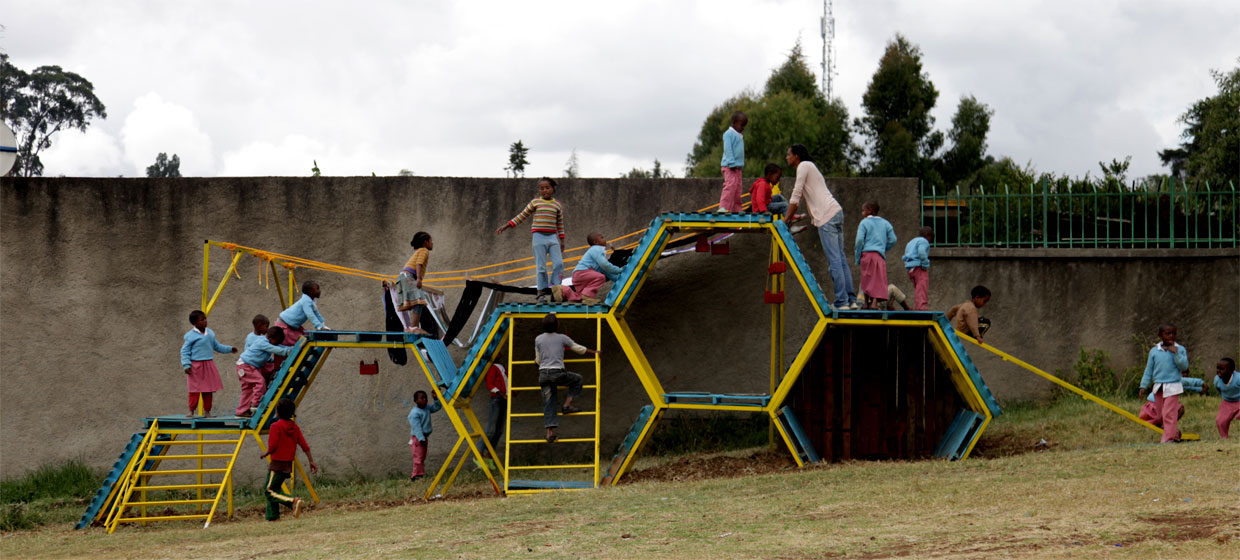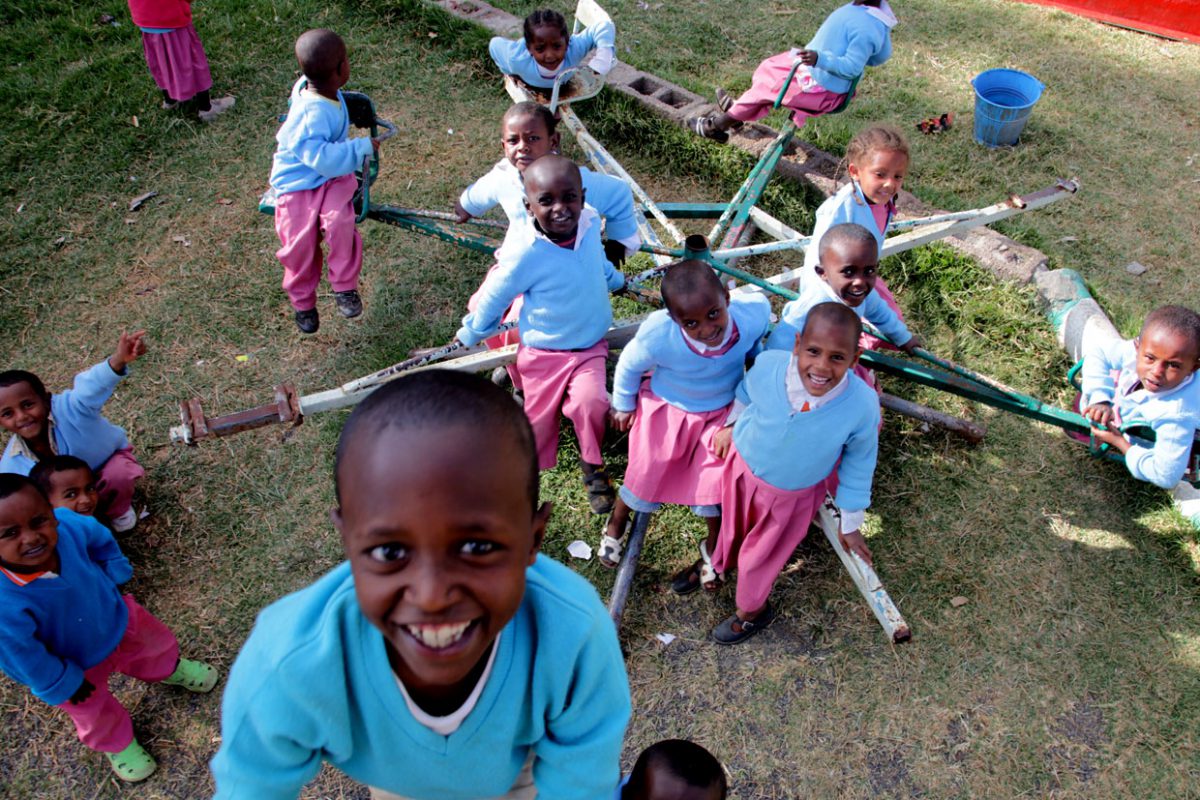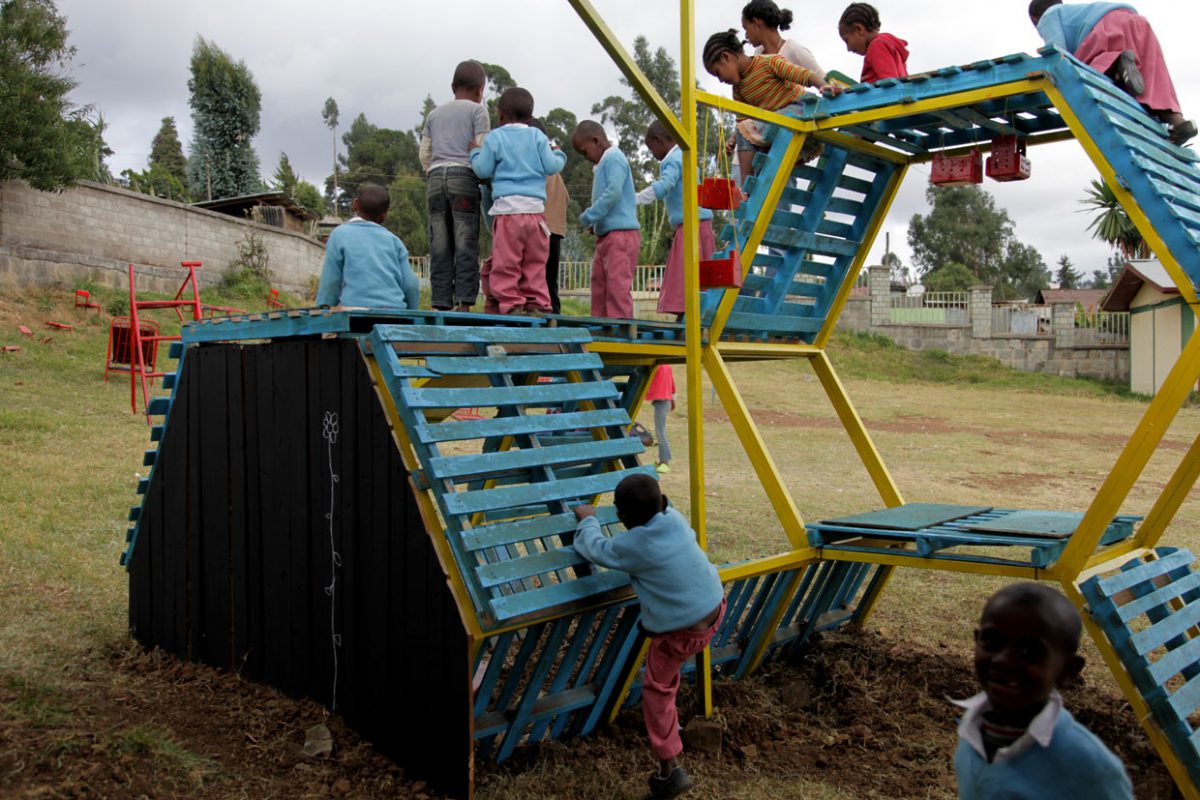
Keep up with our latest news and projects!

Kibebe Tsehay Orphanage, one of the governmental orphanage centres in Addis Ababa, Ethiopia, is a home for children who have lost their parents. The centre is involved in the rehabilitation of playgrounds for its children with a collaboration between the Spanish Embassy in Addis Ababa, Spanish design group Basurama Collective, the University of Addis Ababa, Spanish aid workers, and students from the Cervantes Institute.
Over 40% of the population in Africa are children under 15 years old, and half the population is under the age of 18. Unfortunately, numbers are high for children in African cities who have lost one or both parents due to war, invasion, natural disasters, conflict, chronic poverty, or terminal illnesses such as AIDS. These children are the most vulnerable individuals faced with the negative repercussions of crisis and conflicts. Moreover, African cities are the leading areas in the world for orphans in 2017, with nearly 52 million in Africa compared to 140 million orphan children worldwide. Orphanage centres are homes and learning institutes for these children in many cases.
In many cases, however, worldwide orphanages centres are not well occupied with necessary infrastructures, amenities, playgrounds, and facilities. Additionally, outdoor play is often the most forgotten element for children in these settings due to lack of funds or other encroaching priorities. In situations where playgrounds are available, most are not functional due to the absence of regular maintenance and are characterized by poor design, environmental contamination, and unappealing damage in the spaces. In this process, children’s natural play in public space is diminished and influences their lives, and also importantly impacts their physical and mental growth.
Improving orphan centre playgrounds will positively contribute to children’s lives for the better and create resilient environments parallel to improving the images of cities and neighbourhoods. Rehabilitation and continuous maintenance are needed in these institutes to address the most essential part of childhood-play.
In December 2012, the Spanish Embassy in Addis Ababa invited Basurama Collective6 to make a children’s playground project in the governmental orphanage centre of Kibebe Tsehay, in Addis Ababa. This orphanage centre is a home and a place of education for children from birth to 8 years old. Here, the children study, sleep, eat, tidy up, and play together with limited space in the centre. The mission for Basurama Collective in this project was to increase enjoyable moments, improve learning skills, and overall happiness in the children’s life using play and play spaces as the main tool and strategy. The project was initiated with a clear understanding of the need for safe, inclusive functioning, and vibrant play areas for the kids living in the house of the Lost Children. Physically, the place had a large outdoor space with no trees and contained secondhand play-furniture that was often unusable, broken, and damaged. Piled in a corner of the institution were old cribs and beds, and even some parts of rusty swings.
The core working methodology of the project focuses on three axes of reflections and actions: public space, community co-creation, and the reuse of materials with emphasis given to proper solutions, to fit the local context and cultural settings of the city.
Throughout the process, the children and youth were deeply involved in making use of the provided digital cameras to capture the spaces, friends’ activities, and favourite corners. The pictures taken by children were collected and analyzed in-depth to understand their daily habits, outdoor engagements, types of activities, and their favourite spots. The finding influenced the final design of the playground. To add an interesting layer in the project, different artists, members from NGOs, professionals, producers, and community leader were involved. During the rehabilitation process, idle materials and solid waste were recycled and reused for different elements in the playground.


This amazing project was completed in only ten days, from material research and selection, to design, production and execution of the work onsite. After an exhaustive materials search of possible local resources, some simple wooden pallets, scrap metal of the old swings, and the beds and cribs that were stored in the orphanage were collected and used to rehabilitate the yard. All these elements were implemented within a metal frame and using a metal tube; this decision guaranteed maximum durability of the intervention in a place that rarely receives funding to improve its space.
The intervention was completed with the installation of a deck, built with advertising canvas donated by a local company, that was designed to adjust according to the needs of each moment and activity. Left behind items were painted in red and placed in the space for their memory and for random play for the kids.
The use of these low-cost materials combined with the synchronization of all the human and material resources that were received in the first days of the process allowed us to finish the intervention and demonstrate that, with good coordination, it is possible to carry out a quality project with minimal resources.
The project culminated with the official opening and a lecture at the School of Architecture in Addis Ababa to underline the importance of such projects ability to change children’s lives. Some volunteers discussed and identified the harsh realities often linked to places like this orphanage, and decided to
continue their own endeavours that support the project’s mission in their free time.
– Because of the simplicity and efficiency of the methodology used to improve the playground in the orphanage centre in Addis Ababa, further projects in different cities including in cities like Maputo, Malabo and Taipei were also able to be influenced.
– Working in culturally different contexts, especially where the international language is sometimes not spoken is challenging. Preparedness to address this issue is essential before the start of implementing public space projects.
– The importance of reused materials has multiple benefits; creates awareness for people to transform their urban environments with the unused materials that surround them, and also develops a strong culture on reusing material and reducing costs.
– Child-friendly public space is an inspiring concept and subject- specifically, working with university students, youth and volunteers to help scale up projects by the youth themselves.
– No matter the living situations of children and the relative geographical
locations, play is vital in many aspects including physical and mental growth and development.
This article belongs to a series of stories about the city at eye level for kids! You can access the full book online in PDF or pre-order your hardcopy to be delivered to your home.
Get your book here